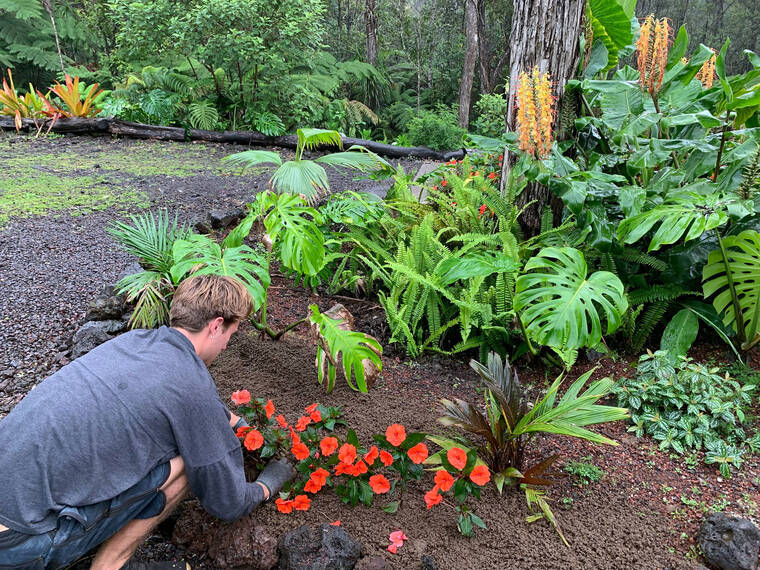When weather conditions are dry, it is a good time to explore ways to conserve water. Organic material is essential to good soil. Well decomposed organic matter helps increase water and nutrient holding capacity of the soil. Undecomposed material like leaves and clippings used as surface mulch can help conserve moisture and keep weeds under control. Nematodes, those little microscopic worms that feed on your roots, will do less damage in a high organic soil. Organic matter may also increase the minor element and microbiological activity of your soil.
For these reasons, save your grass clippings and leaves. They are like money in the bank. You can store these materials in a corner of the garden.
Decay of plant material deposited in a compost pile can be hastened through the use of fertilizer.
For each bushel of leaves, grass clippings or pruning tips, add two cups of balanced fertilizer and one cup crushed coral or hydrated lime.
Build the compost pile in layer-cake method, a layer of plant material 6-inches deep. Continue until the pile is 4 feet high or so.
After the pile shows signs that decay is well under way, usually 4 to 5 weeks, mix the pile by turning it over. A pitchfork would come in handy at this point. The compost is ready to use in about three months. It is an excellent material to mix with soil for vegetable gardens and new plantings.
Anthurium especially thrive on well drained compost mixed with volcanic cinder They love that high organic, well-aerated mix with good water retention capability, yet good drainage. A good mix needs to be able to anchor the roots and stem so that the plant will not topple over as it grows upward yet provide sufficient moisture, nutrients, and aeration to the plant. Cinder or crushed rock added to composted wood shavings, sugar-cane bagasse, macadamia nut shells, or peat or tree bark will serve to better anchor the roots.
Even with composting and mulching, you will still need to fertilize your garden.
Some Hawaiian soils are very young and low in nutrients. Larger amounts of fertilizer are needed for growing plants and lawn grasses, than where soils are older and better developed.
The soil is not only lacking in the primary elements, such as nitrogen, phosphorus and potassium, but it is deficient in the “minor elements” such as copper, zinc, and boron.
When plants are grown in these mineral deficient soils and fertilized with ordinary plant foods, they often develop various deficiencies.
Several years ago, plant doctors studied these deficiencies and learned not only how to recognize the affected plants, but they learned also that they could be corrected by spraying with the mineral in which the plant was deficient.
But what average gardener has the training that enables him to recognize deficiency symptoms in plants?
To overcome this problem, the nutritional spray was developed. It is a mixture that contains about all of the minerals in which a plant can be deficient. At first it was necessary to add lime in order to neutralize these solutions; but now garden stores have mixes that require no lime.
Two to three times a year is usually enough to apply a nutritional spray.
In new gardens, it may be necessary to apply a nutritional spray about every three months for the first year in order to keep ahead of deficiencies.
Along with the nutritional spray, it is a good idea to use a soil application of the minor elements. Magnesium, iron and zinc are the most important elements, but occasionally we find plants with boron, manganese, copper and other “trace” element deficiencies.
There are several “shotgun” combinations available at your supply store. Certain plants require larger amounts of certain elements than other plants.
Increasing your soil organic matter and using a “shot gun” treatment as a spray or soil application or both will keep your plants from having these deficiencies under most conditions. Remember to follow directions on the label. Too much of the important plant nutrient materials can be as bad as too little!
For further information, contact the office near you. The number for the Hilo Office is 959-9155 and Kona is 322-4893



